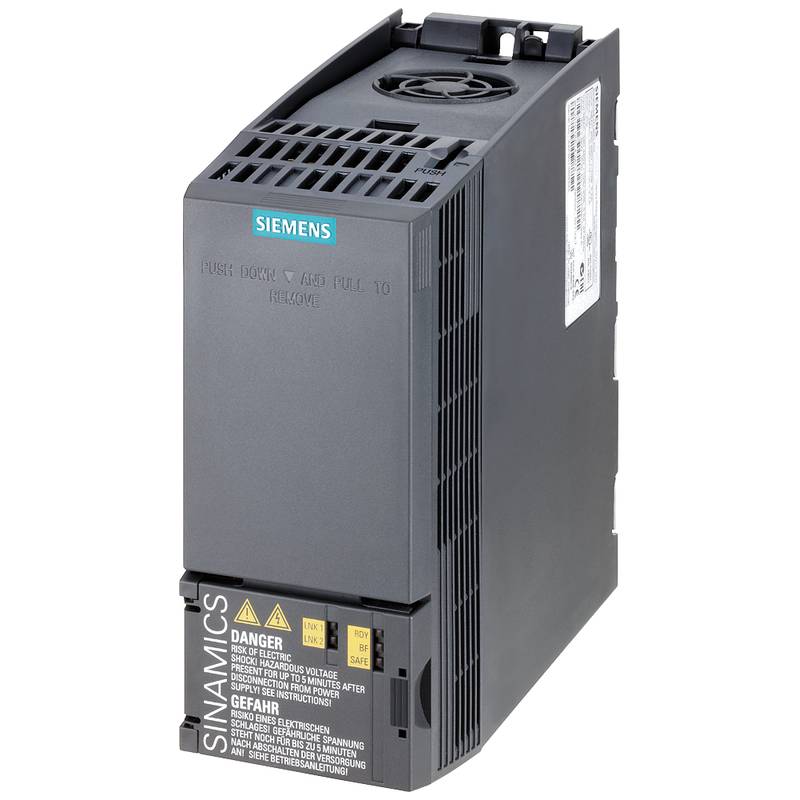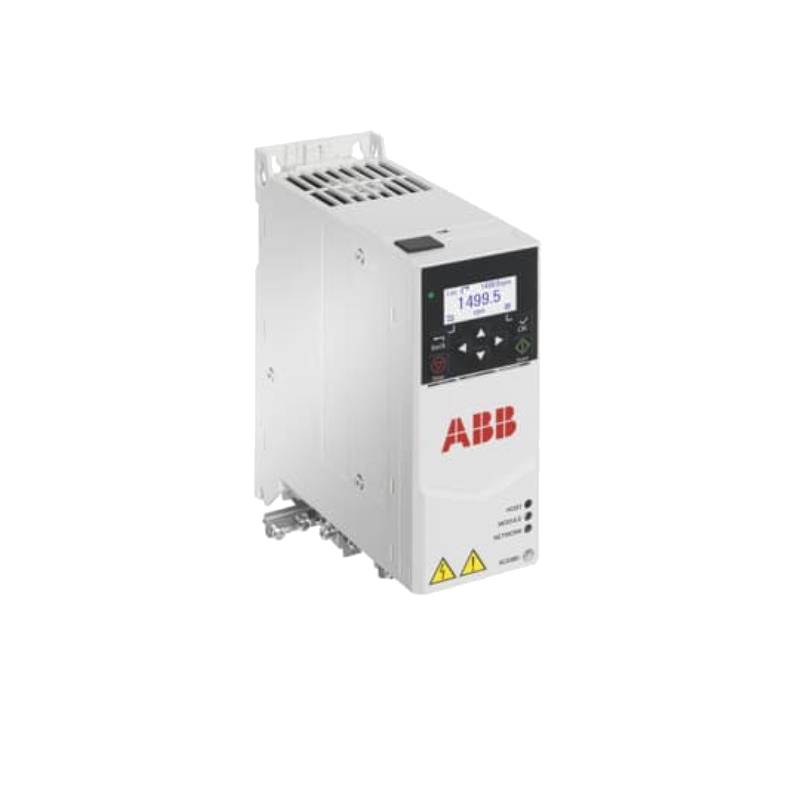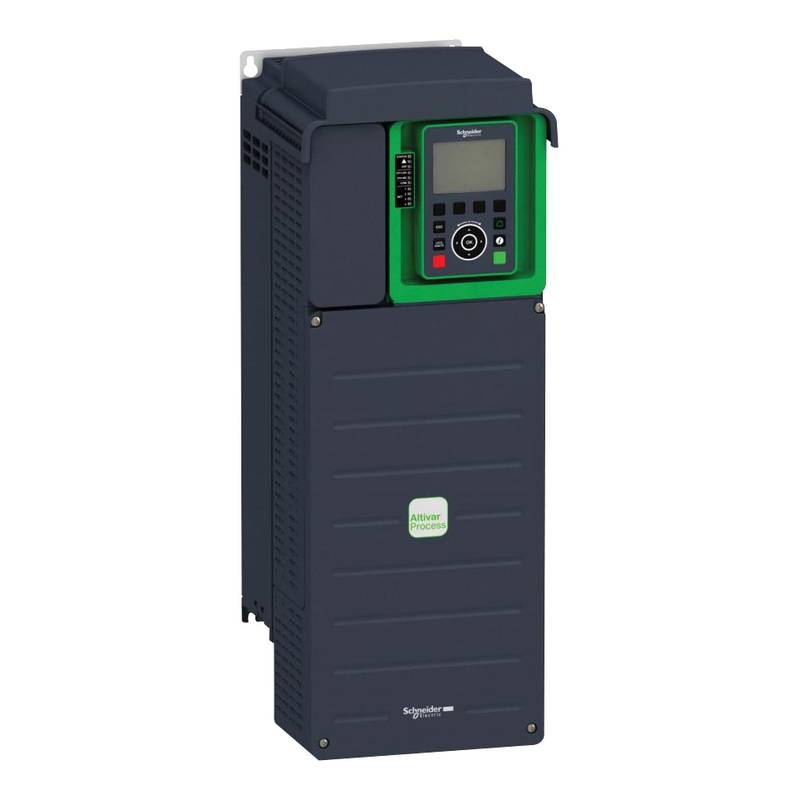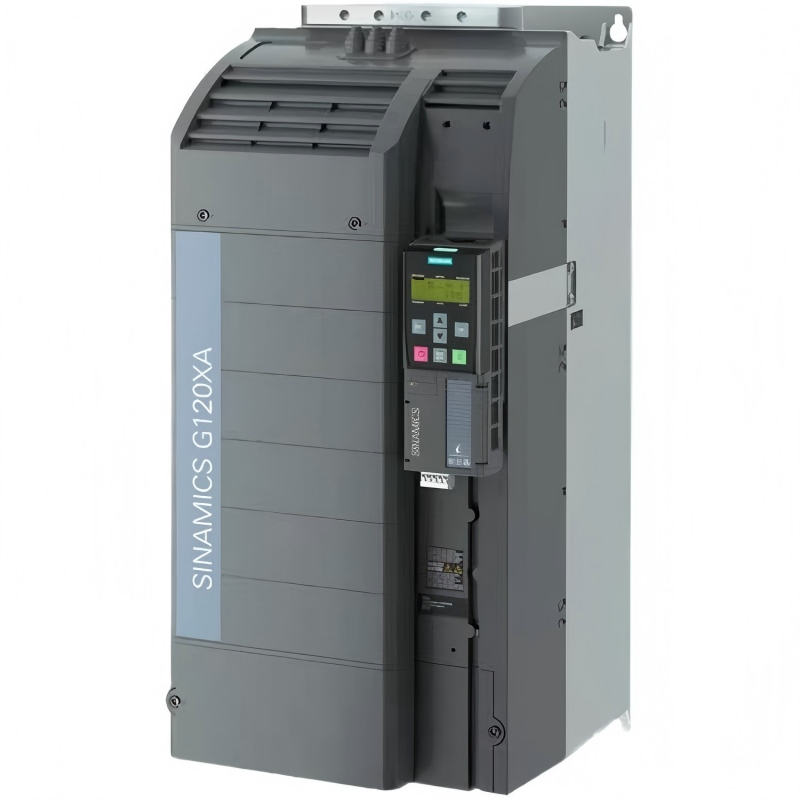
The Siemens 6SL3210-1KE17-5UF1 G120 High Reliability Safety AC Drive Frequency Converter is a robust solution designed for demanding industrial applications, offering exceptional performance, advanced safety features, and seamless integration. This 7.3A, 3kW drive excels in applications requiring precise motor control and reliable operation, making it a cornerstone for efficiency and safety in modern automation systems. Its high reliability ensures minimized downtime, while integrated safety functions protect personnel and machinery.
Product Specifications
| Feature | Specification |
| :-------------------------- | :------------------------------------------------ |
| Product Number | 6SL3210-1KE17-5UF1 |
| Series | SINAMICS G120 |
| Rated Power | 3 kW |
| Rated Current (Normal Duty) | 7.3 A |
| Input Voltage | 380-480 V 3-phase |
| Output Voltage | 0-480 V 3-phase |
| Protection Class | IP20 |
| Safety Integrated | Yes (STO - Safe Torque Off) |
| Communication Interfaces | Profinet, Profibus (optional) |
| Dimensions (H x W x D) | Varies by Control Unit and Power Module combination |
Core Features & Market Positioning
The Siemens SINAMICS G120 platform, represented by the 6SL3210-1KE17-5UF1, is distinguished by its modular design, allowing for flexible configuration and adaptation to specific application needs. This modularity, coupled with Siemens' renowned engineering expertise, positions the G120 as a high-reliability drive system favored in sectors demanding precision and uptime. The integration of Safety Integrated functions, specifically Safe Torque Off (STO), directly addresses critical safety requirements, reducing the need for external safety components and simplifying system design. Its robust construction and advanced control algorithms ensure consistent performance even in challenging industrial environments, setting it apart from less specialized competitors.
Key Application Scenarios
The Siemens 6SL3210-1KE17-5UF1 is ideally suited for a wide array of industrial applications. It is commonly deployed in the manufacturing sector for conveyor systems, material handling equipment, and assembly line automation where precise speed control and frequent start/stop cycles are common. In the food and beverage industry, its hygienic design considerations and reliable operation are crucial for processing and packaging machinery. Furthermore, it finds extensive use in the chemical and pharmaceutical industries for pumps, mixers, and agitators, where its robust performance and safety features are paramount.
Practical System Integration Guidance
Integrating the Siemens 6SL3210-1KE17-5UF1 into an existing or new system requires careful attention to power, control, and communication connections. The drive utilizes a modular approach, typically consisting of a Control Unit (CU) and a Power Module (PM). For the 6SL3210-1KE17-5UF1, it's essential to pair it with a compatible Control Unit (e.g., CU240E-2 or similar) and ensure proper wiring for both power and control circuits according to the detailed diagrams in the Siemens documentation. Commissioning involves parameterization via the drive's keypad, a connected HMI, or through fieldbus communication (like Profinet or Profibus), allowing for fine-tuning of motor characteristics, ramp times, and safety functions.
Operation and Risk Mitigation
Operating the Siemens 6SL3210-1KE17-5UF1 involves leveraging its intuitive control interface for parameter adjustments and monitoring. The drive provides comprehensive diagnostic capabilities, displaying status information and fault codes directly on the operator panel or remotely via communication networks. Key error codes, such as F001 (overcurrent) or F007 (overtemperature), offer immediate insight into operational issues. Risk mitigation is significantly enhanced by the integrated Safe Torque Off (STO) function, which reliably prevents unintended motor movement by disconnecting power to the motor without requiring a full power cycle, thereby ensuring personnel safety during maintenance or emergency situations.
Scalability & Long-Term Value
The SINAMICS G120 platform, including the 6SL3210-1KE17-5UF1, offers significant scalability and long-term value through its compatibility with Siemens' broader automation ecosystem. This drive can be seamlessly integrated with Siemens PLCs (like SIMATIC S7 series) and HMI devices, enabling sophisticated automation solutions and IIoT connectivity. The modular design allows for future upgrades or modifications by simply exchanging Control Units or Power Modules, adapting the drive to evolving process requirements without a complete system overhaul. This future-proofing, combined with the drive's inherent reliability and Siemens' extensive support network, ensures a high return on investment over its operational lifespan.
Frequently Asked Questions (FAQs)
What is the primary function of the Siemens 6SL3210-1KE17-5UF1?
It acts as an AC drive, controlling motor speed and torque. It offers high reliability for industrial use.
This frequency converter enhances process efficiency. It precisely manages motor performance.
Its core purpose is variable speed motor control in demanding applications.
How does the "High Reliability" aspect of this drive benefit industrial operations?
High reliability minimizes unplanned downtime. This boosts overall operational productivity.
It ensures consistent performance under stress. This reduces maintenance costs.
Robust design and quality components contribute to longevity. This provides a lower total cost of ownership.
What does "Safety Integrated" with STO mean for this Siemens drive?
STO ensures safe torque off functionality. This prevents unexpected motor startup.
It enhances personnel safety during maintenance. It meets stringent industrial safety standards.
This integrated safety reduces external wiring and components. It simplifies safety system implementation.
What types of motors can be controlled by the 6SL3210-1KE17-5UF1?
It is designed for standard AC induction motors. It supports a 3kW power rating.
The drive offers flexible parameterization for various motor types. It can handle asynchronous motors.
Consult the manual for specific motor compatibility details. Ensure proper motor data is entered for optimal performance.
What are the typical voltage and current ratings for this drive?
It operates on a 380-480V, 3-phase input. The rated current is 7.3A.
This drive is suited for standard industrial power grids. It efficiently powers 3kW motors.
The 7.3A rating ensures it can handle motor starting currents. It provides ample power for normal duty.
How is the Siemens 6SL3210-1KE17-5UF1 commissioned and parameterized?
Commissioning is done via keypad or communication. Parameters are adjusted for motor and application.
Siemens TIA Portal can be used for advanced setup. This allows for detailed configuration and diagnostics.
Proper wiring and safety checks are crucial. Follow the official Siemens commissioning guide.
What communication protocols are supported by this SINAMICS G120 drive?
Profinet is a standard communication option. Profibus can also be integrated.
These protocols enable seamless integration into automation networks. They allow for remote control and monitoring.
This connectivity is vital for IIoT and Industry 4.0 applications. It facilitates data exchange with PLCs and SCADA.
Can this drive be used in environments with dust or moisture?
The 6SL3210-1KE17-5UF1 has an IP20 protection class. It is suitable for clean industrial environments.
For dusty or wet conditions, an enclosure is recommended. Ensure the enclosure meets appropriate IP ratings.
This protects the drive from ingress of solid particles and liquids. It extends the operational life in harsh settings.
What are common troubleshooting steps for this AC drive?
Check power supply and wiring first. Review fault codes on the display.
Consult the Siemens fault code list for specific issues. Ensure motor is correctly connected and parameterized.
Verify safety functions are correctly configured. Resetting the drive after fault correction is often necessary.
How does this drive contribute to energy efficiency in industrial applications?
Variable speed control reduces energy consumption. Motors only draw power needed for the task.
Precise speed regulation prevents over-speeding. This optimizes motor operation and efficiency.
The drive's efficient power electronics minimize losses. This leads to significant energy savings over time.























